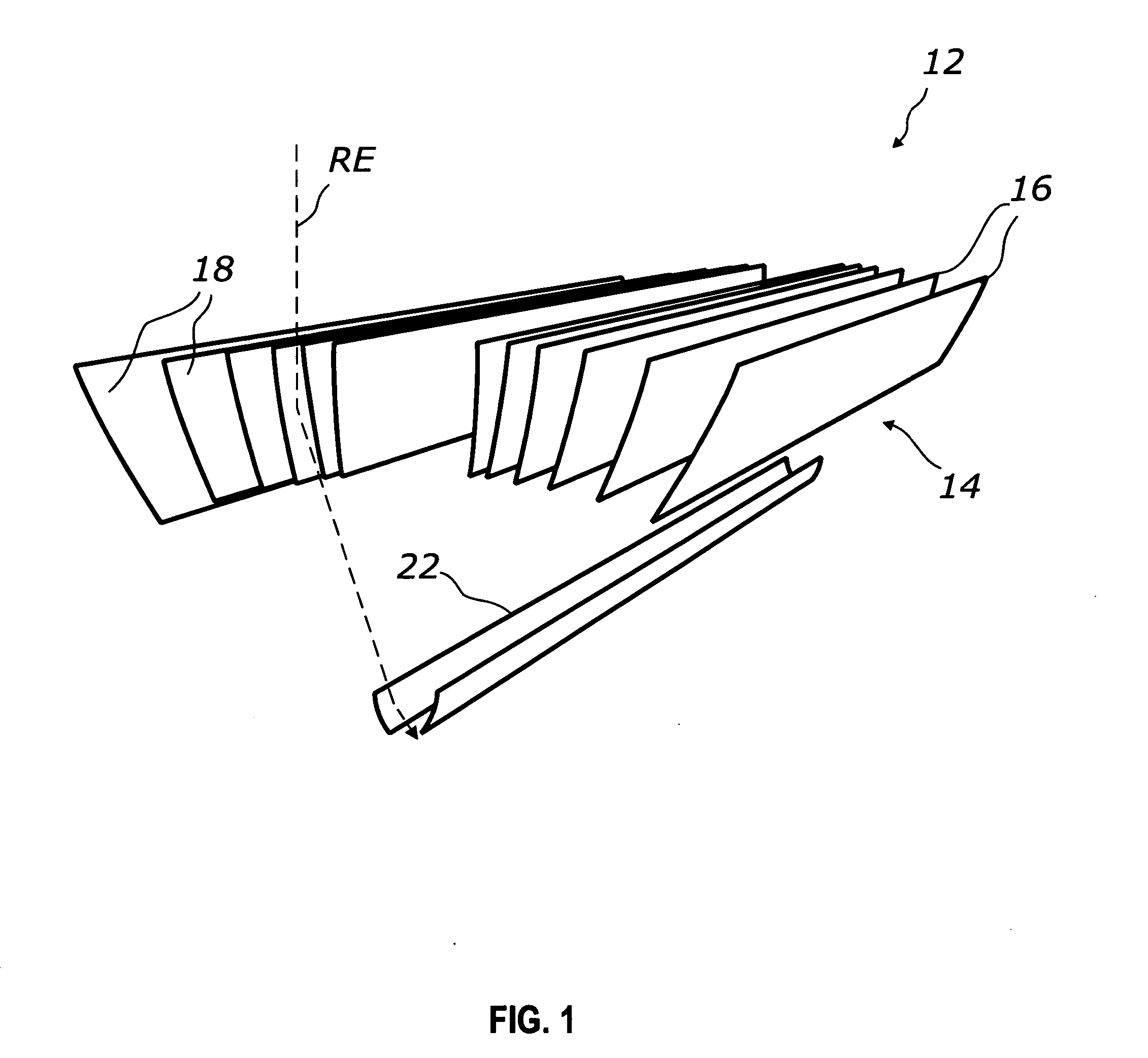Multistage system for radiant energy flux transformation
a multi-stage energy flux and radiant energy technology, applied in the direction of instruments, lighting and heating apparatus, optical elements, etc., can solve the problems of limited energy collection ability of one-stage energy concentrators, limited shape and alignment tolerances of prior art design concepts, and poor boundary definition of concentrated beams projected on target areas. achieve the effect of increasing the efficiency of desired flux transformation
- Summary
- Abstract
- Description
- Claims
- Application Information
AI Technical Summary
Benefits of technology
Problems solved by technology
Method used
Image
Examples
Embodiment Construction
[0025] The embodiments of flux transformation systems selected for the purpose of illustrating the invention include a primary rear-focus concentrating flux collector and an elongated secondary flux collector.
[0026]FIG. 1 shows a perspective schematic view of a system 12 for concentrating and transforming radiant energy flux according to a preferred embodiment. System 12 includes a primary concentrating collector 14 comprising an array of cylindrical elongated reflectors 16 with longitudinal axes generally aligned parallel to a reference line (not shown), and an elongated secondary concentrating collector 22 extending parallel to reflectors 16. The array of reflectors 16 comprises two symmetric segments where reflectors 16 are spaced apart and positioned adjacent to each other.
[0027] Reflectors 16 are individually tilted and aligned in a stepped arrangement, so that primary collector 14 has a linear Venetian blind-like configuration with the front longitudinal edges of reflectors ...
PUM
 Login to View More
Login to View More Abstract
Description
Claims
Application Information
 Login to View More
Login to View More - R&D
- Intellectual Property
- Life Sciences
- Materials
- Tech Scout
- Unparalleled Data Quality
- Higher Quality Content
- 60% Fewer Hallucinations
Browse by: Latest US Patents, China's latest patents, Technical Efficacy Thesaurus, Application Domain, Technology Topic, Popular Technical Reports.
© 2025 PatSnap. All rights reserved.Legal|Privacy policy|Modern Slavery Act Transparency Statement|Sitemap|About US| Contact US: help@patsnap.com



